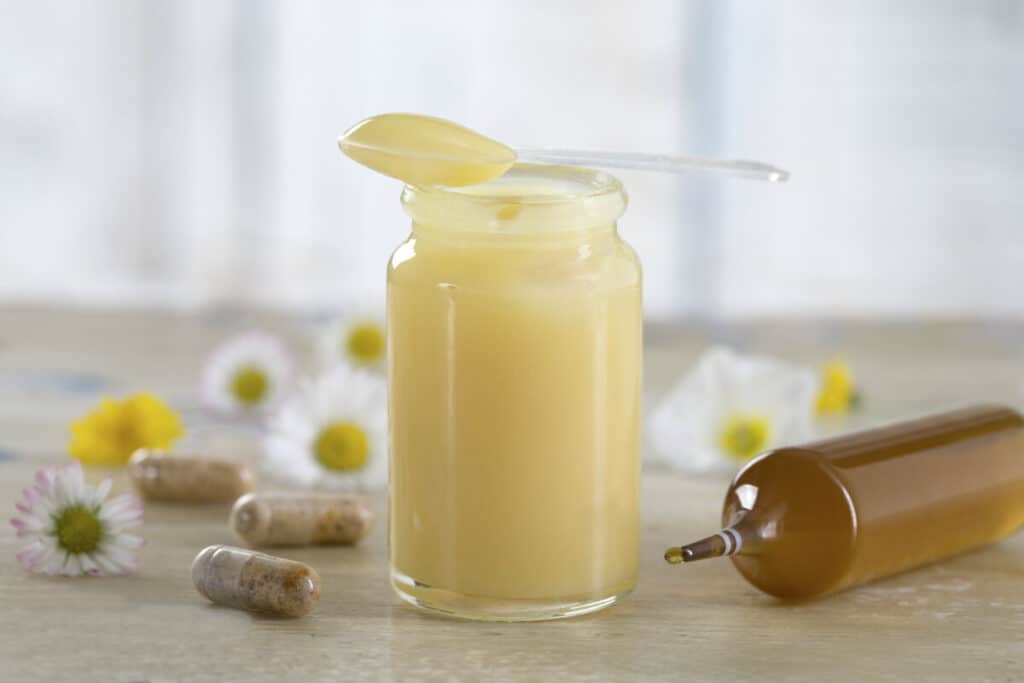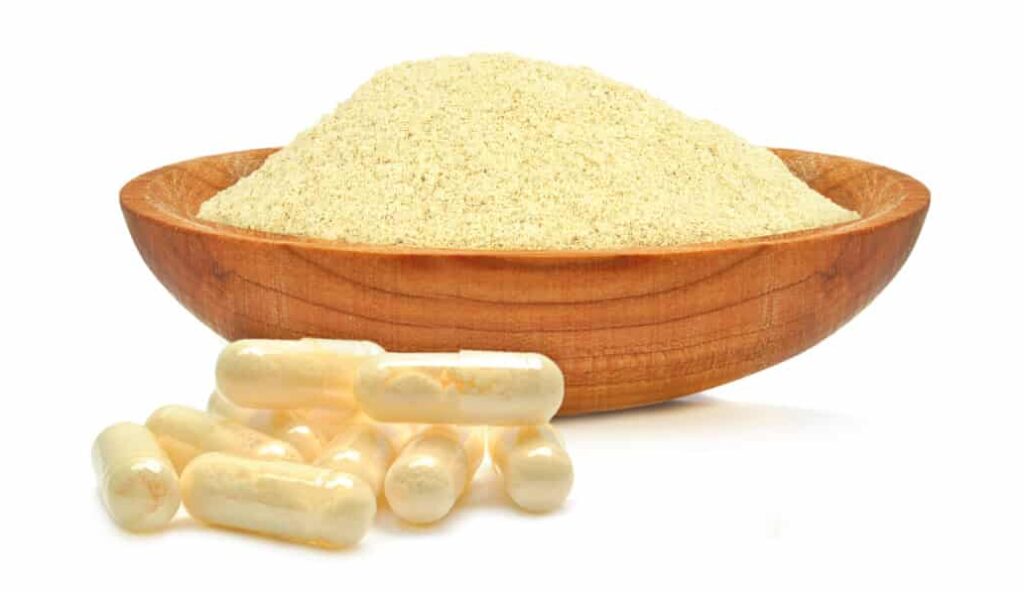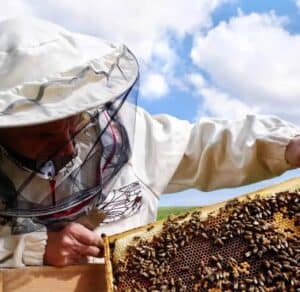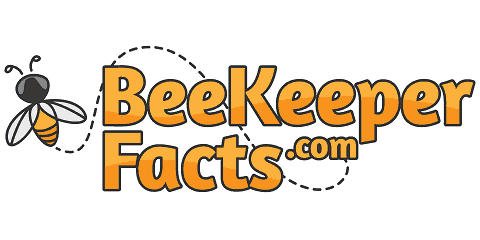Selling Royal Jelly: How Much Can You Make? Is It Worth It?
Selling royal jelly is something you would consider later in your beekeeping journey. This income stream is for intermediate to very experienced beekeepers who have begun to raise their own queens. That being said, how much can you expect to sell your royal jelly for?
You can earn between $8 to $14 per ounce or $65 to $80 per lb selling your royal jelly. The prices will vary depending on the quality of packaging, your local region, if the royal jelly is in freeze dried powder form, and if its non-GMO certified organic.
To be profitable in beekeeping you need to consider all possible income streams. If you’ve begun to graft your own queens, selling royal jelly could be another complimentary income stream for your beekeeping business. I’ll explore the different options you should consider as you plan to sell your royal jelly.
Can You Make Money Selling Royal Jelly

As I stated above selling royal jelly is more for the intermediate to very experienced beekeeper. As a beginner beekeeper you are unlikely to have the infrastructure or enough strong colonies to begin raising queens let alone collecting royal jelly. It also requires close attention and precise timing to graft queen cells and collect royal jelly.
Harvesting royal jelly ties up resources and time. It is quite labor intensive since you have to collect it from thousands of queen cells to produce enough royal jelly to be sold. Hence the reason you can demand a higher price in comparison to selling honey, beeswax, or honeycomb. But as the saying goes, if it was easy everyone would do it!
And if you’re interested in other income streams from your hives, hold up for just a minute, I wrote a simple guide on how many beehives it takes to make a living that I encourage you to read!
I personally don’t like the taste of royal jelly, I find it gross since it is so sour and bitter tasting. But there is a high demand for it depending on the region. Although in most cases it does get sold pretty quickly. The key is correct pricing and presentation.
There is quite a few health food stores and boutique style food shops that sell royal jelly at a very high price because of high quality glass packaging and attractive labels. The higher the perceived value the better price you will get.
You really need to know your local pricing and what price you can demand for you royal jelly. You’re going to want a price that is at least equal to or higher than the price of selling raised queens separately. Since you’re robbing from thousands of queen cells to collect enough royal jelly to sell.
In some regions it will make sense to collect and sell royal jelly, while in other regions raising and selling mated queens may be far more profitable. Or you may be able to test your local market and sell both.
To get an idea of what your raw royal jelly could sell for, here is the price range based on Country. I’ve researched price ranges based on the sale of raw royal jelly direct to the consumer, not wholesale.
United States – $8 to $14 per ounce or $65 to $80 per lb. You can demand a higher price for non-GMO certified organic and for the freeze dried powder form. Also, using higher quality packaging will affect the prices you can charge. These prices are in US dollars.
Canada – $30 to $48 per 50 grams or $235 to $270 per kg. You can demand a higher price for non-GMO certified organic and for the freeze dried powder form. Also, using higher quality packaging will affect the prices you can charge. These prices are in Canadian dollars.
United Kingdom –£60 to £120 per 50 grams. You can demand a higher price for non-GMO certified organic and for the freeze dried powder form. Also, using higher quality packaging will affect the prices you can charge. These prices are in Pound sterling.
Australia – $25 to $48 per 50 grams or $170 to $200 per kg. You can demand a higher price for non-GMO certified organic and for the freeze dried powder form. Also, using higher quality packaging will affect the prices you can charge. These prices are in Australian dollars.
The price ranges I’ve listed above are based on the average prices demanded across a wide number of regions in each Country. They are very realistic price ranges but please keep in mind these are only estimates and I urge you to double check the pricing being demanded in your local region.

Since royal jelly is used in such a wide variety of retail products such as skin care and moisturizing creams, shampoo’s, natural toothpastes, and soaps, the quality of packaging is very important.
If you use high quality hexagon glass bottles with unique lids and labelling you will increase the perceived value of your products. Thus being able to charge a premium and in most cases doubling your profits. This is a well known marketing strategy for pretty much any retail product.
Also, the prices above are for only selling raw royal jelly but what about selling your royal jelly in different forms? You can sell it in a freeze dried powder form and demand almost double the price compared raw royal jelly.
There is a higher demand for the powdered form of royal jelly as well since it is used in a wide variety of health supplements, smoothies, teas, cakes, and there is even fudge recipes.

And if you end up selling freeze dried royal jelly it’s not much of a leap to enter the supplement market. By selling royal jelly supplements you could potentially increase your profit margins exponentially by simply selling 1000mg vegetable capsules. There is a very high demand for these types of products.
Of course, always abide with your local regional laws and regulations when it comes to selling food and health products to consumers. If you’re unsure of the laws in your region I always recommend connecting with local beekeepers and the beekeepers association for further guidance.
Harvesting Royal Jelly From Queen Cells

Collecting royal jelly is the beginning process of grafting and raising queen bee’s. Any beekeeper who raises queens will be very familiar with the production of royal jelly.
And If selling bees is an income stream you’re interested in, you’ll like this guide I wrote about how much money you can make selling bees that I encourage you to read!
I also want to emphasize realistic expectations in the harvesting of royal jelly. It takes thousands of queen cells to produce a kilogram of this precious substance.
How much royal jelly you can produce will depend on the strength of your colonies, how many queen cups you can graft, a strong honey flow and/or how much you feed your colonies.
You harvest the royal jelly from the queen cells just after they are capped. This takes about 3 days or 72 hours after grafting. Keep in mind that every hour after the cell is capped means less royal jelly that can be harvested.
Plus not all queen cells will take, so expect only 70% to 80% will be taking. Therefore you won’t be collecting from around 20% to 30% percent of the cells. You may get higher numbers but it’s always best to air on the side of caution.
You can potentially collect between 0.15 to 0.25 grams of royal jelly per cell. To simply collect 1 gram of royal jelly you will have to harvest from 4 to 7 queen cells. So to collect 1 oz (28 grams) you will need to collect from 112 to 196 queen cells. That is a substantial number of queens cells to simply produce one ounce of royal jelly.
Also, if you only get 80 percent of the queen cells taking then you will have to graft between 135 and 235 queen cells to collect 1 ounce of royal jelly. But keep in mind you are harvesting every 3 days with the potential of harvesting twice a week.
I’ve included a chart below that gives you a full breakdown of how many queen cells it takes to collect large amounts of royal jelly. The numbers below are based on a 20% loss or only 80% taking and collecting from 0.15 to 0.25 grams per queen cell.
| Grams | Ounces | Number of Queen Cells |
| 28g | 1 oz | 135 to 235 cells |
| 57g | 2 oz | 270 to 470 cells |
| 250g | 8.8 oz | 1188 to 2068 cells |
| 500g | 17.6 oz | 2376 to 4136 cells |
| 1000g (1kg) | 35 oz | 4762 to 8290 cells |
Here is a pretty good video illustrating the harvesting of royal jelly.
Storing Royal Jelly
It is recommended to store raw unprocessed royal jelly in the fridge or freezer. If you have a large amount of royal jelly I would store a small amount in the fridge and freeze the rest.

You can store royal jelly in the refrigerator for approximately 1 year and in the freezer for 2 to 3 years.
Freeze dried powder form of royal jelly has a very long shelf life. You can store it in a cool and dry place for several years without any issues.
Freeze dried royal jelly can be stored longer because the freeze drying process removes all of the moisture content while preserving all the nutritional content. Leaving a very stable version that can be stored for years. This is also why freeze dried royal jelly is more concentrated than raw royal jelly.

Joseph Davis
My goal is to show that anyone can take up beekeeping and it can be a very rewarding hobby. I strive to share my experiences and answer any questions you may have.
